Porsche Taycan: The Benchmark
Article by James Herne
Ferdinand Porsche was originally an electrical engineer. He involved in creating the first electric carriage already in 1898. In 1900 he created the first 4-wheel-drive electric vehicle (yes, really). It took 120 years to return to the roots.
“A game changer” is how Mark Webber called the prototype of the fully electric Porsche in May 2018 after the test drive.
The Porsche Taycan is the most powerful and fastest accelerating car produced by Porsche. It accelerates like a Tesla. On top of that, Porsche can do it repeatedly without overheating after a few acceleration tests.
If you are a Porsche sports car owner and take a seat behind the steering wheel of the Taycan for the first time, you are amazed. You thought it would feel like a Panamera, but it feels quite like a 2-door Porsche sportscar. And acceleration is even better. The low seating position, the perfect steering wheel position and the view out from the car – you like it there, you like it a lot. It really echoes that the car was built for a sports car driver.
How much distance can it cover in 24 hours?
Before the launch of the Taycan, in the summer of 2019, a 24 hour test was held on the Porsche-owned Nardò Ring in Italy. While out on the track, the optimal driving speed was around 127 mph / 205 km/h and a whopping 2128 miles / 3425 km were covered in 24 hours. This translates to average speed of 88 mph / 142 km/h despite the charging stops.

The first series-production Taycans were delivered to the customers in January 2020. The Turbo S version with 560 kW of peak power could accelerate to 60 mph in 2.6 seconds and to 100 km/h in 2.8 seconds. The 0-60 mph time was even quicker than on the Porsche 911 GT2 RS version that was on sale at the same time. Porsche is always modest with its performance numbers, so, in the 2020 “Car and Driver” test, 0-60 mph was actually reached even in 2.4 seconds. So, no chance for CO2 cars anymore.
Porsche Taycan is also Audi e-tron GT
There is one more car that is as great as the Porsche Taycan – the Audi e-tron GT. The reason is that it is technically a Taycan, just with a different body and interior design. Interestingly, out of the two, Porsche’s base price is cheaper. The reason is that Audi is available only with 4-wheel-drive.
Rear-wheel-drive Taycan
The base Taycan is available with rear-wheel-drive and smaller battery. Rear-wheel-drive and weight reduction is the original formula for the best Porsche driving experience. By the way, the rear-wheel-drive Taycan holds the Guinness World Record for the longest drift with an electric car.
Available with the smaller battery are only the base-version Taycan and the 4-wheel-drive Taycan 4S, both in sedan and in Sport Turismo body. All the Taycans in the Cross Turismo trim come with the larger “Plus” battery. The plus with the Plus-version is that in addition to the longer range, the larger battery can accept higher charging power. The rear-wheel-drive Taycan, with the optional second layer of battery modules under the rear seat, has the longest range among the Taycan versions.
Fastest charging
Porsche Taycan was the fastest charging car when it came out and it still is thanks to its pioneering 800 volt architecture. Roughly speaking, it charges the first half of the battery in 10 minutes in a capable charger.
The Plug & Charge automatic payment system simplifies charging: just plug in the charging cable and the charging station automatically identifies the connected vehicle thanks to the authentication data saved in the vehicle.
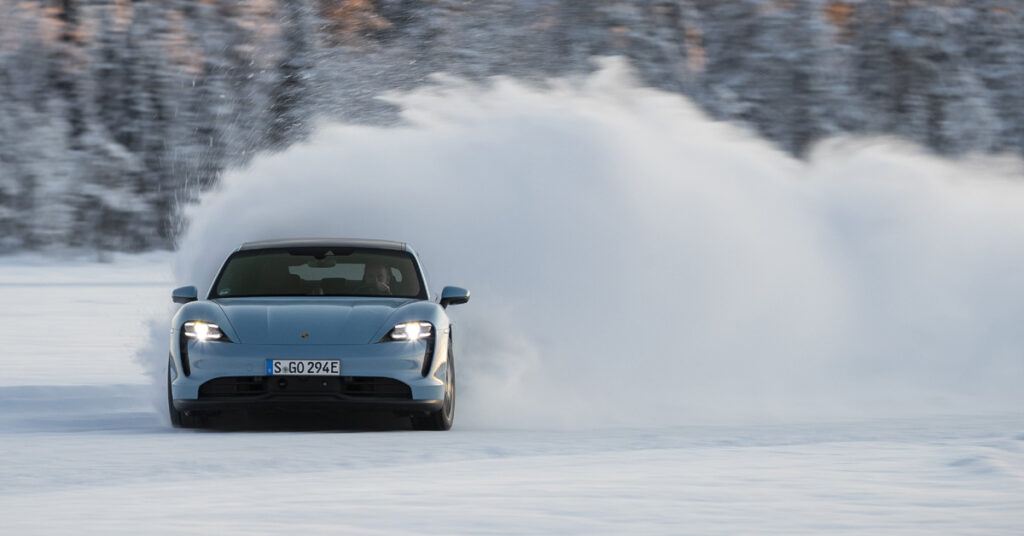
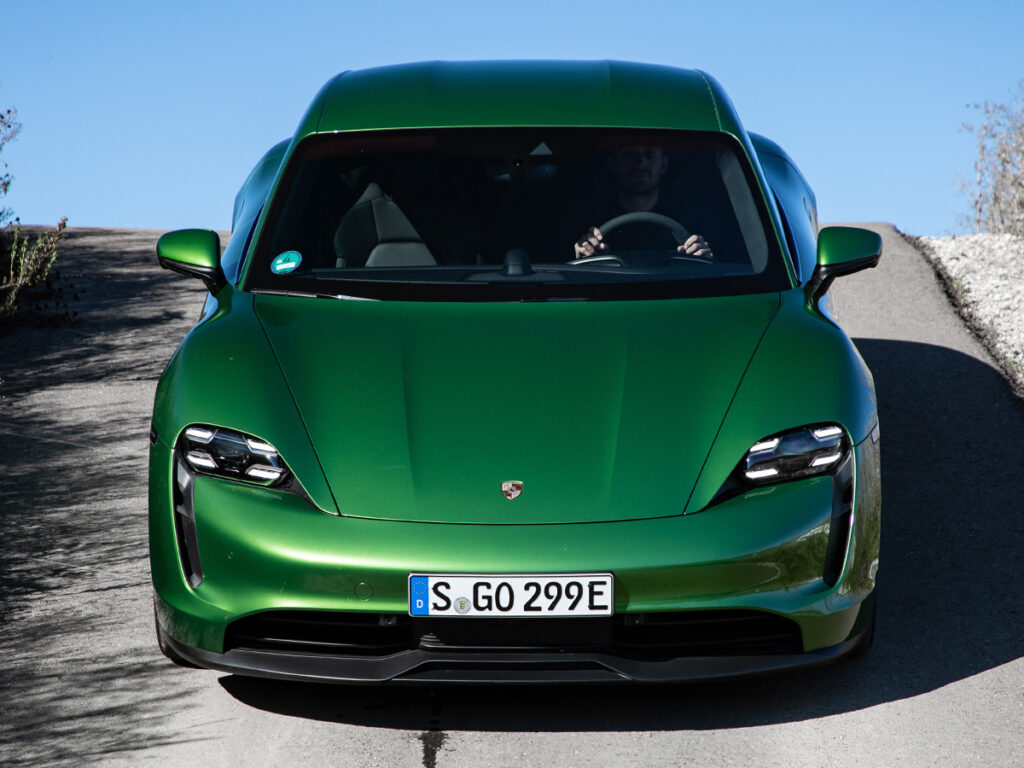
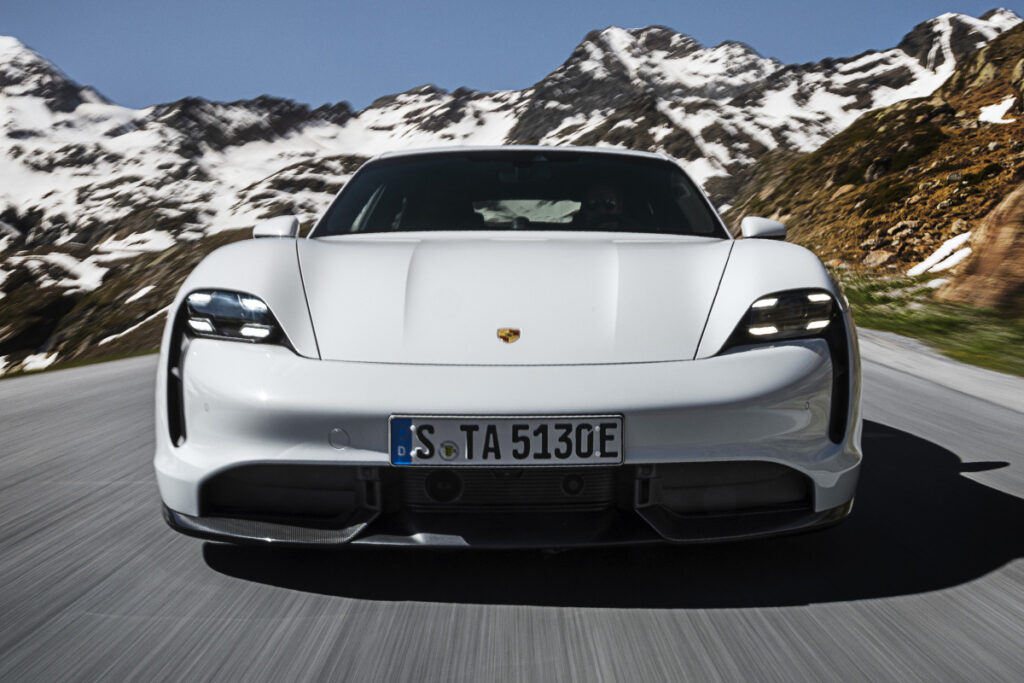
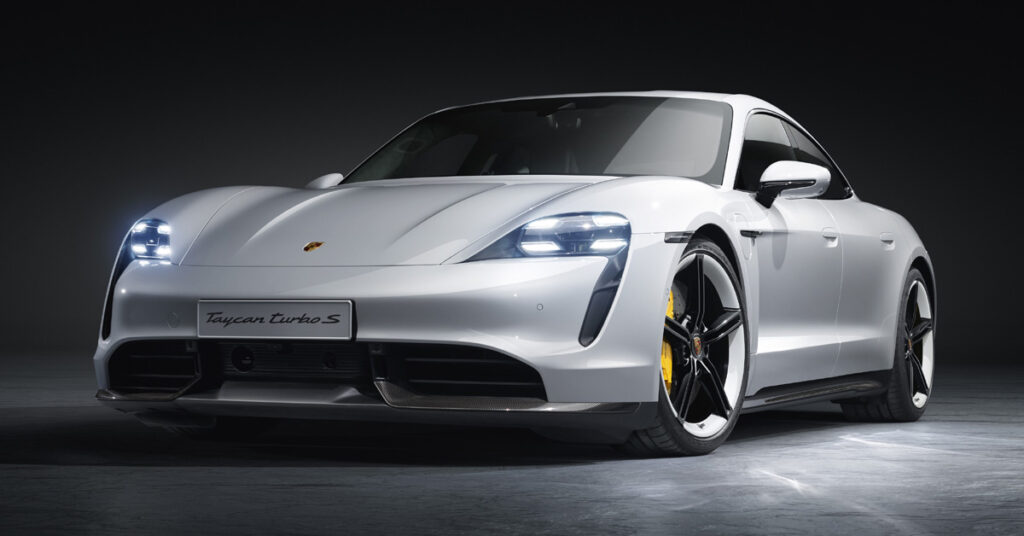
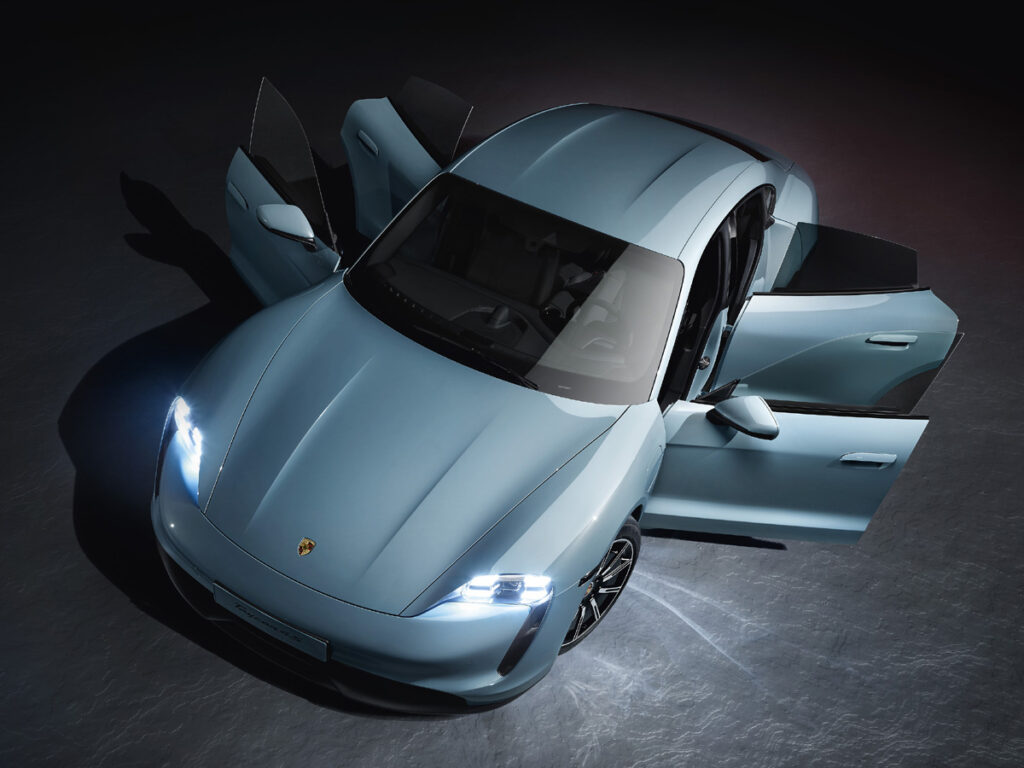


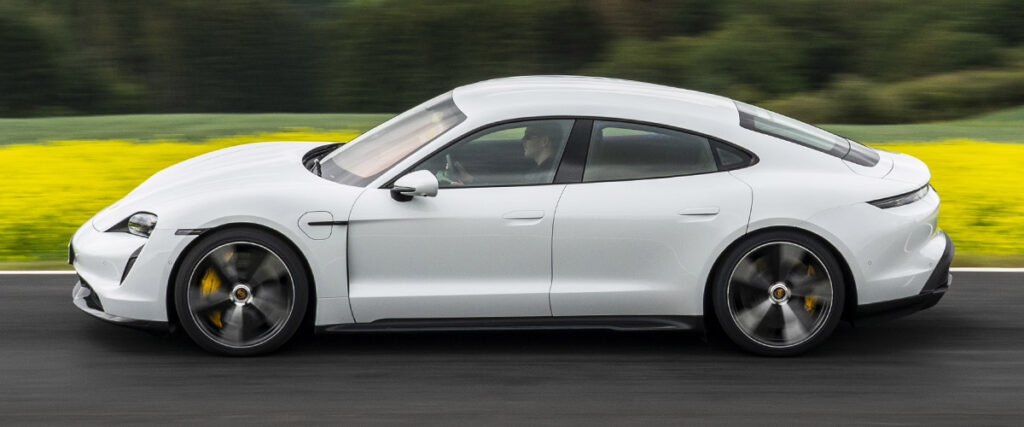

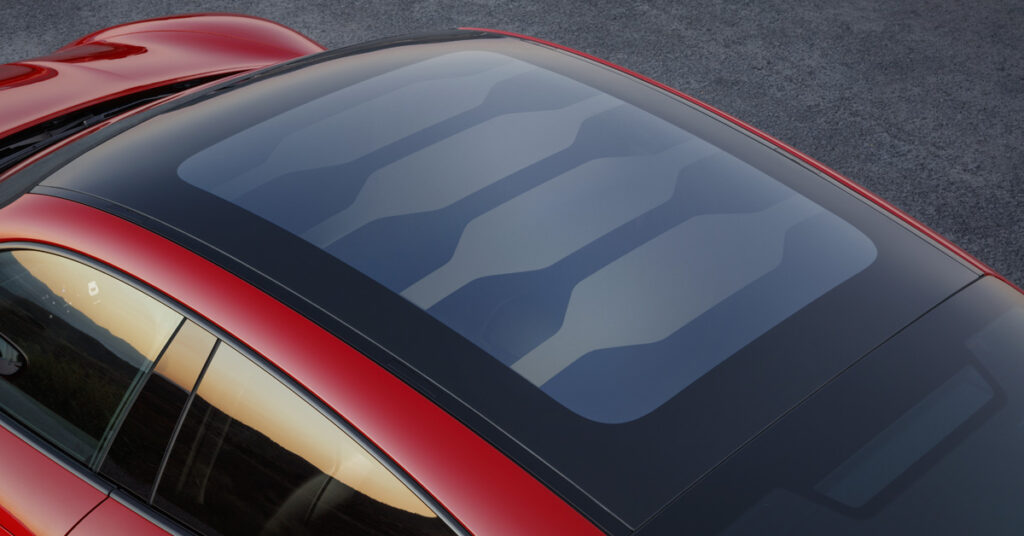
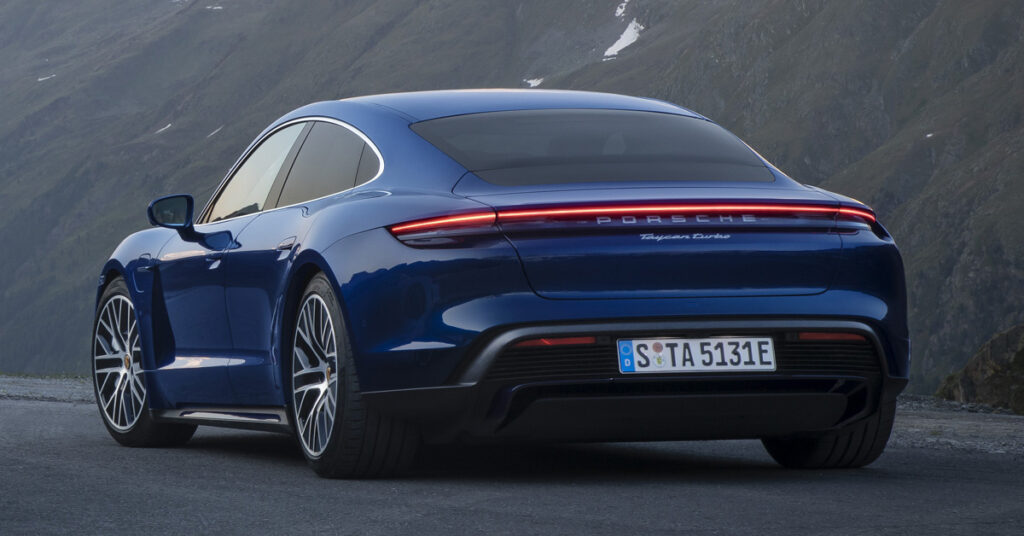



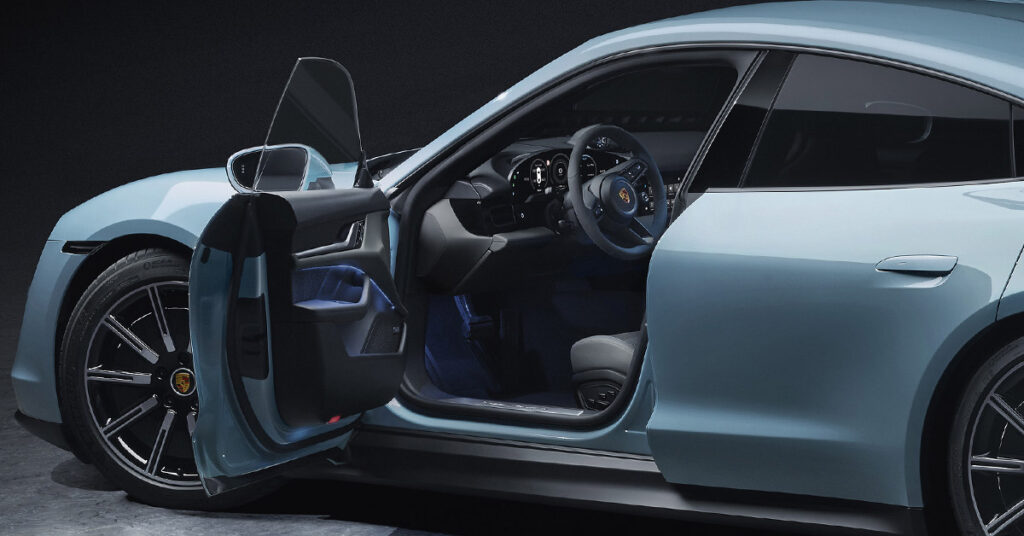
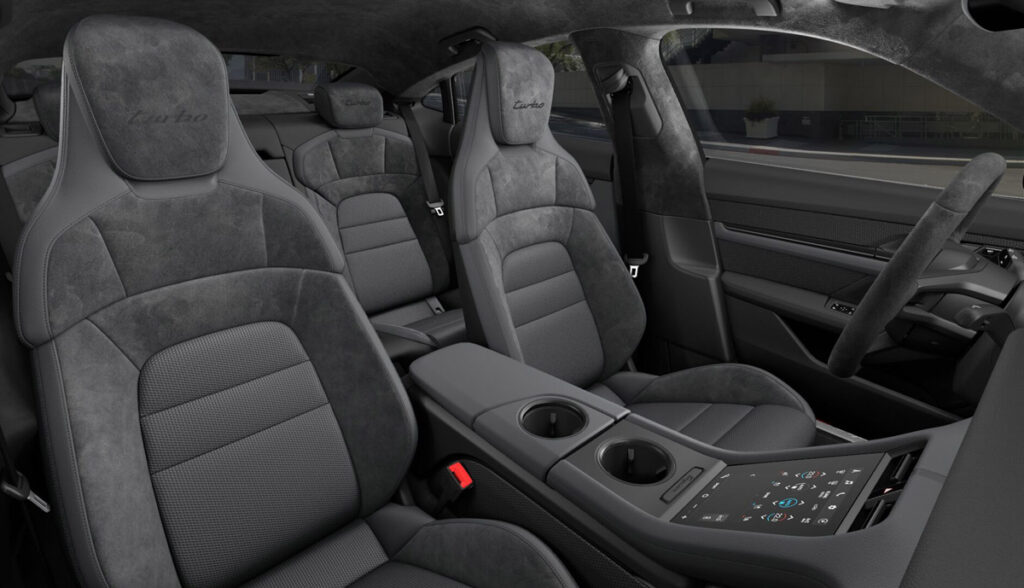
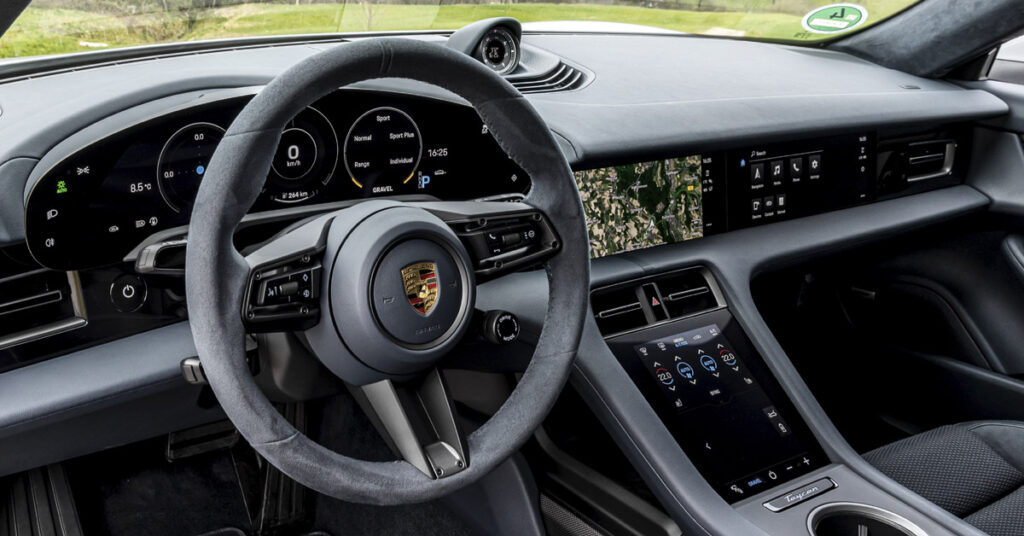
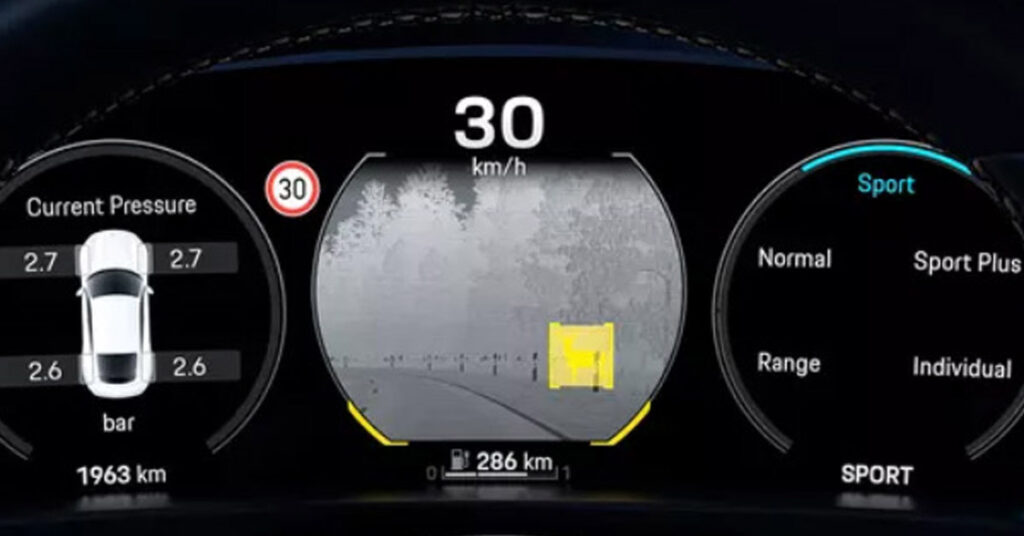
The optional Advanced Adaptive Cruise Control includes the Emergency Steer Assist function that helps the driver to steer the vehicle around an obstacle in a critical evasion manoeuvre. The optional Lane Change Assist includes a function that detects if a rear-end collision situation is approaching and then warns the vehicle approaching from the rear with hazard warning lights. Thank you, Porsche!
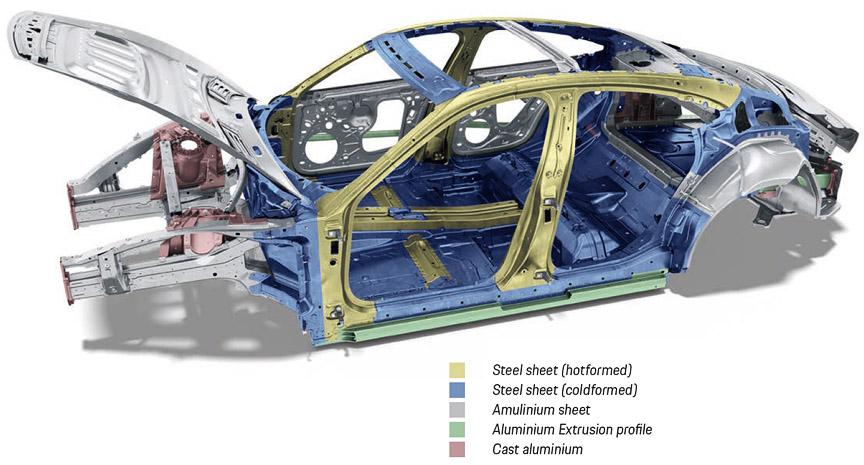
The winner
The Porsche Taycan immediately won the main car awards in 2020:
World Performance Car, World Luxury Car, German Car Of The Year.

“We are so happy to have been awarded these prizes. They reflect the positive feed-back from our customers and are a great incentive for our future work,” said Oliver Blume, Chairman of the Executive Board of Porsche. “We see ourselves as pioneers of sustainable mobility and have brought an emotive as well as highly innovative sports car to the road with the Taycan – fully electric and 100 percent Porsche.”
Station wagons
While Porsche Taycan and Audi e-tron GT are essentially the same car, it is interesting that Audi, which is famous for its station wagons called “Avant”, is offered with sedan body only, while Porsche, which historically was a sports car, is offered in two station wagon versions. The regular station wagon is called Sport Turismo and the version with off-road look is called Cross Turismo.



Albrecht Reimold, Member of the Executive Board for Production and Logistics at Porsche: “Since the start of production in 2019, we have been manufacturing the Taycan in a completely carbon-neutral manner.”
2024 changes
After almost 150.000 original Taycans produced, the updated version came in 2024 with its facelift as the smallest of the changes.
Facelift
While there were minimal visual changes at the back of the facelifted car, the whole front end is new: the front apron, headlamps and front wings.
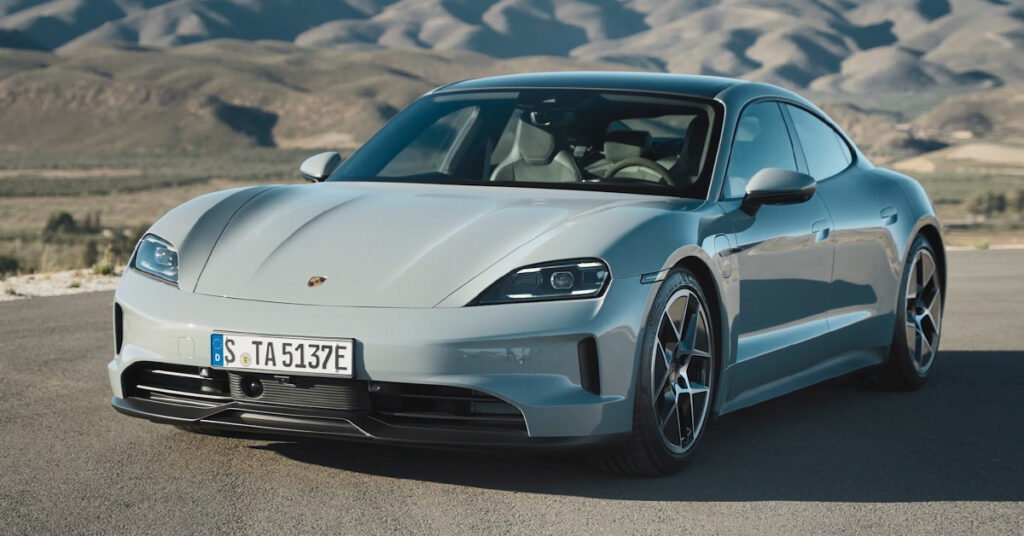
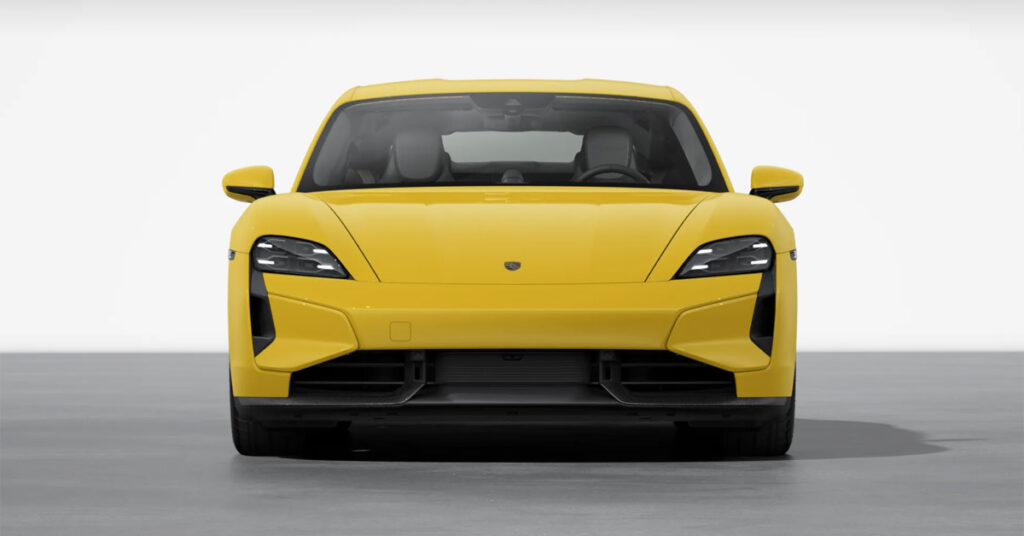
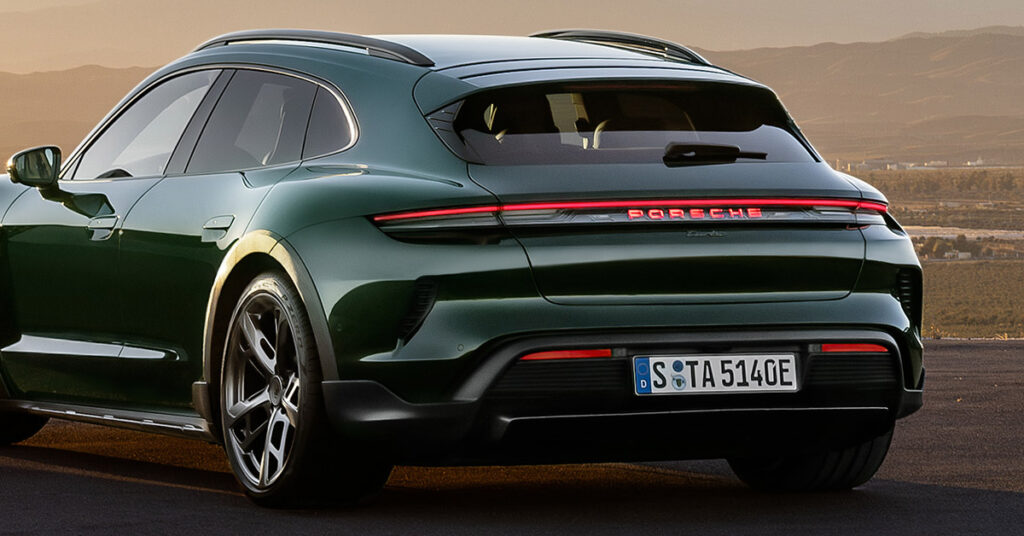
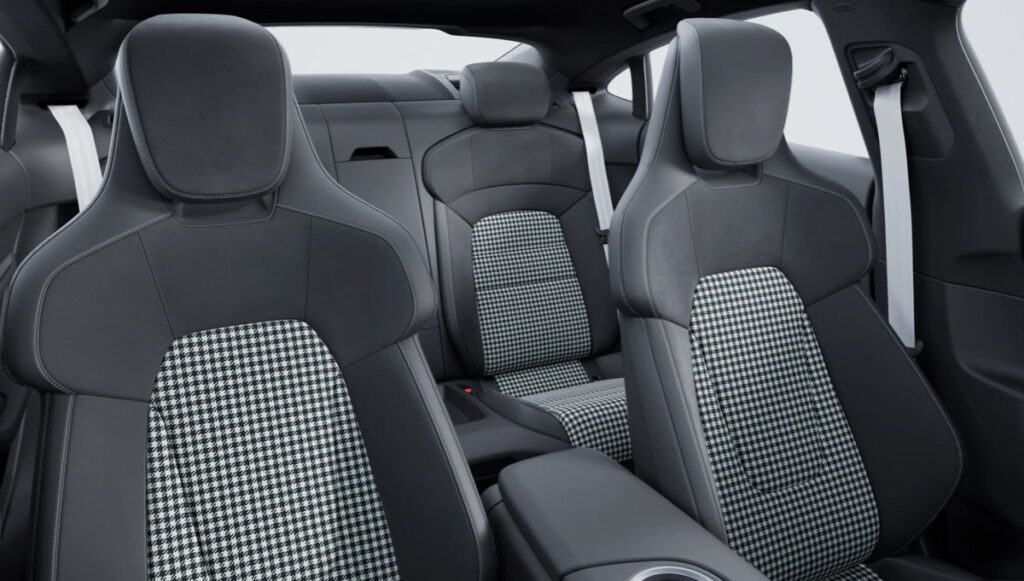
New battery technology
The main improvement together with the facelift was about the battery capacity and charging power. While the original Taycan already was a charging champion, the facelifted Taycan pushes the peak charging power to 320 kW.
With the 2024 changes, the smaller battery pack grew from 71 to 82 kWh (+15%) and the larger battery from 83 to 97 kWh (+16%). These are “net” figures showing the usable capacity of the battery. So, basically the new small battery has similar size to the old large battery pack. Thanks to newer technology, the new 82 kWh battery is significantly lighter than the old 83 kWh battery.
EV specialist Kyle Conner of Out of Spec did a maximum range test with the facelifted Taycan. By switching off all the consumers and driving at a steady 50 mph / 80 km/h with 4 people in the car, they covered 465 miles / 748 km in almost 10 hours. It was a painful test and far below normal energy consumption, especially if you think of winter conditions when heating runs on electricity. Nevertheless, the knowledge about what the car can do, if need be, makes the owners happy.
More power
Thanks to more powerful rear-axle motor, acceleration figures became 0.3-0.6 seconds better compared to the original Taycan. The 0-60 mph and 0-100 km/h figures start with 4 even for the cheapest version, showing that the base Taycan is as quick as the 911 Turbo was in the past.
The peak power of the Taycan Turbo increased from 500 to 650 kW and the peak power of the Turbo S increased from 560 to 700 kW.
Turbo GT
When the 700 kW Taycan Turbo S is not quite enough, there is the Turbo GT with 760 kW overboost power for 10 seconds. The power actually reaches 815 kW for 2 seconds. The maximum torque is 988 ft-lbs / 1340 Nm.
The Turbo GT came in two variants. The standard car came with 4 seats and a ducktail-style rear spoiler. The car with the optional no-cost Weissach package came with a large rear wing and without rear seats.
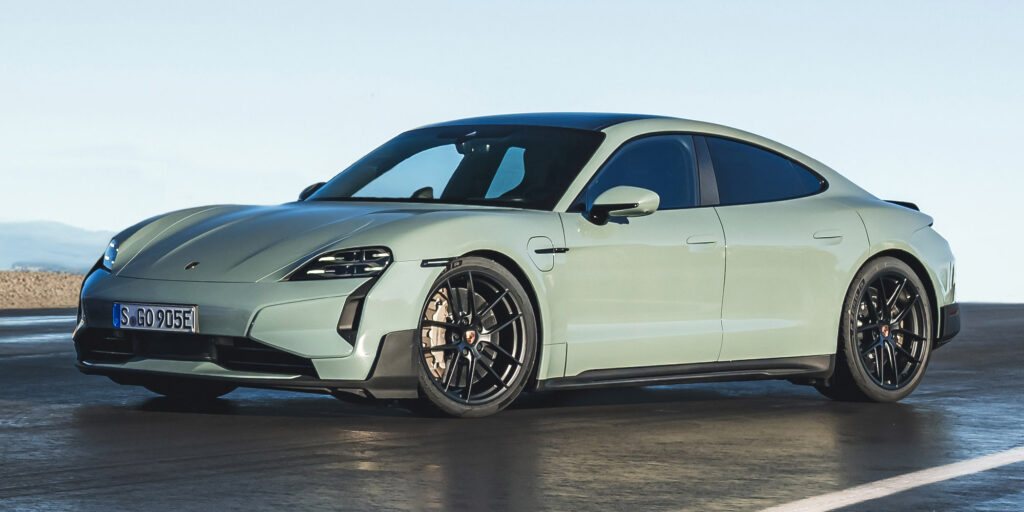
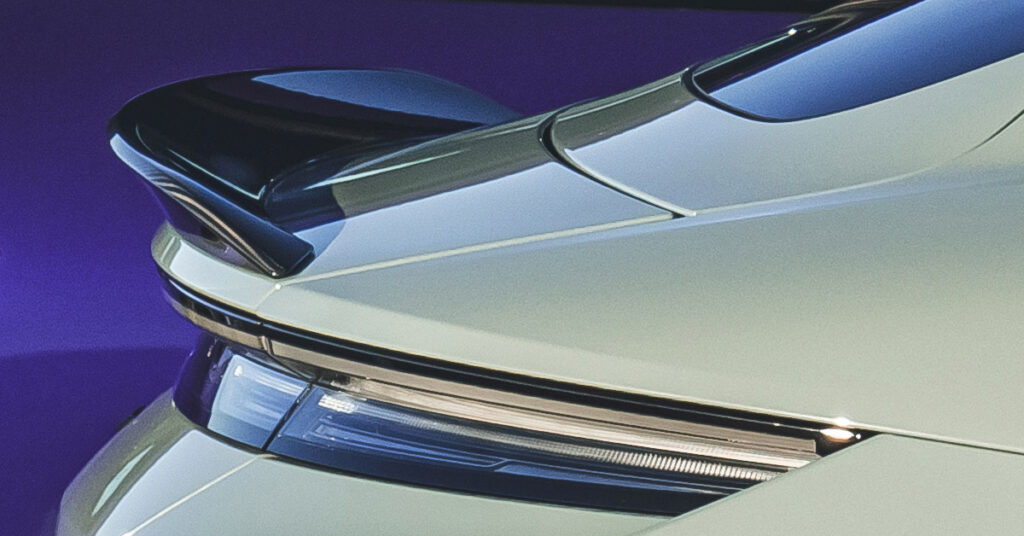

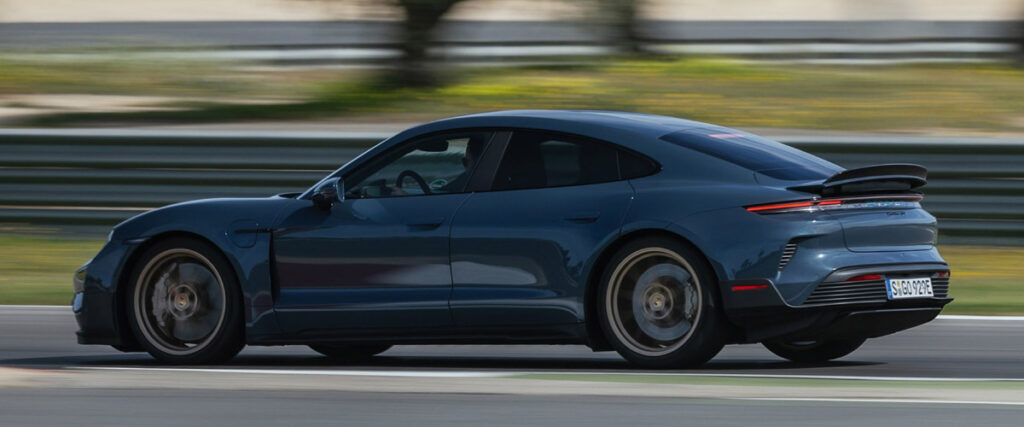
Turbo GT with Weissach package

The fastest electric car on the Nürburgring is the Rimac Nevera supercar (Porsche is co-owner in Rimac). If the standard Turbo GT with four seats would have been used for the lap time, then it would have set the lap record among four seat cars.
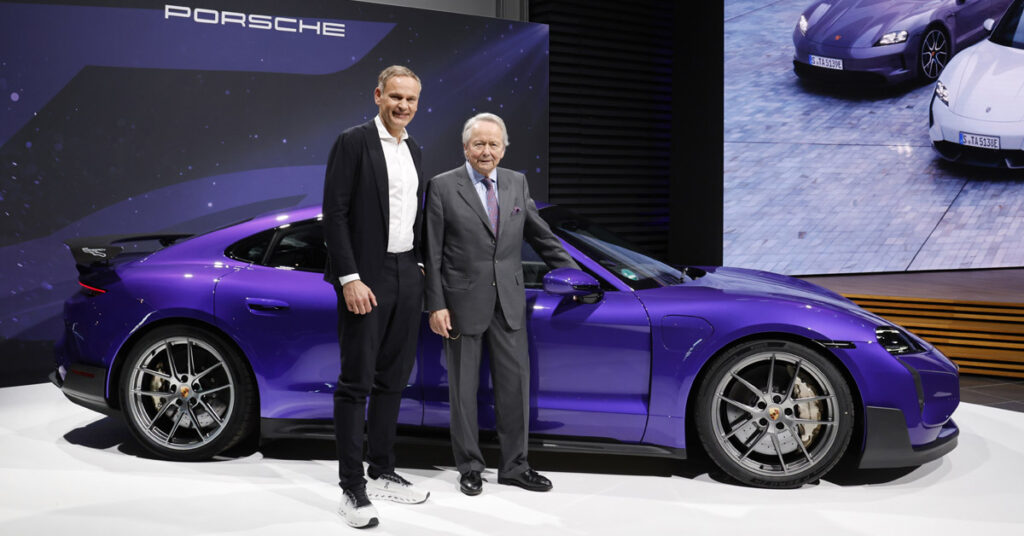
The Turbo GT Weissach accelerates to 60 mph in 2.1 seconds and to 100 km/h in 2.2 seconds. Weissach package moves the electronic top speed limiter from 180 mph / 290 kmh further to 190 mph / 305 kmh.
The Weissach package makes the car 70 kg / 154 lbs or 3% lighter despite the added rear wing. The package includes full bucket seats made of carbon fibre, omission of rear seats, omission of the electric closing function of the tailgate, less insulation material, basic front speakers instead of the Bose sound system and many other weight reduction measures.

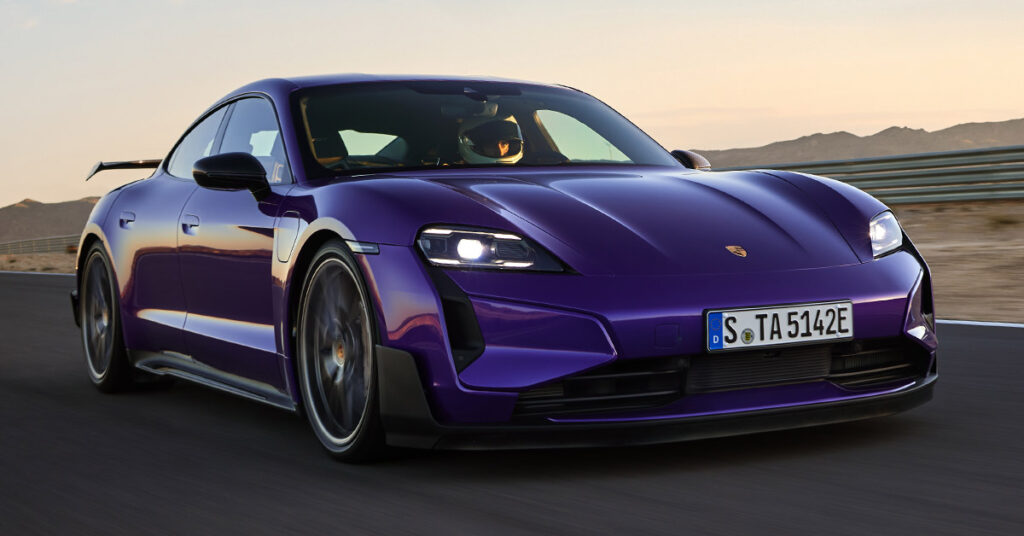
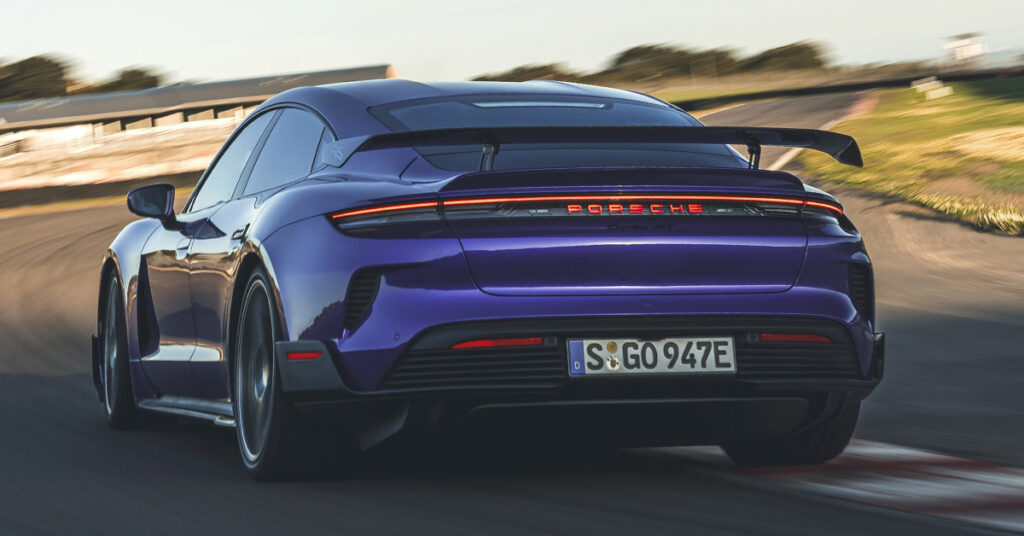
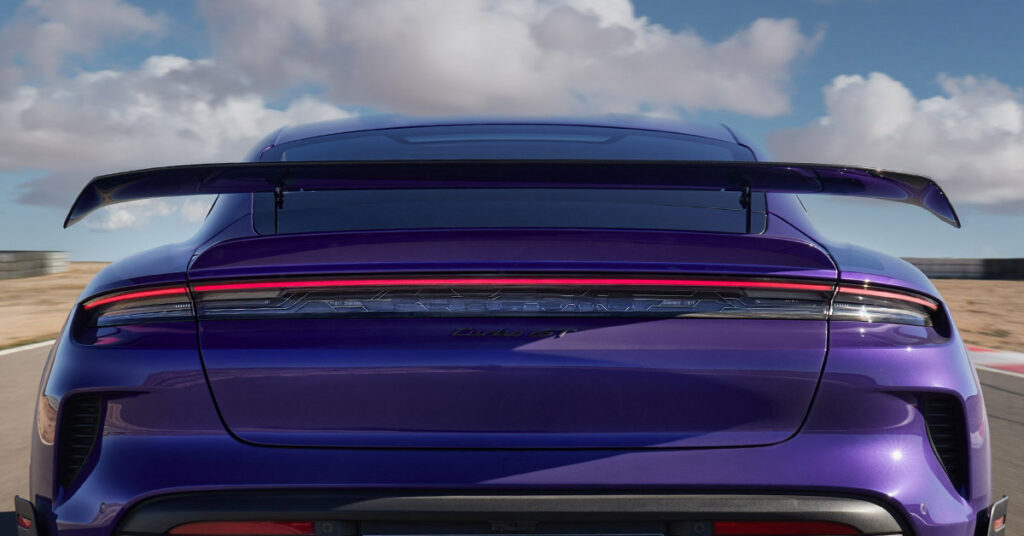

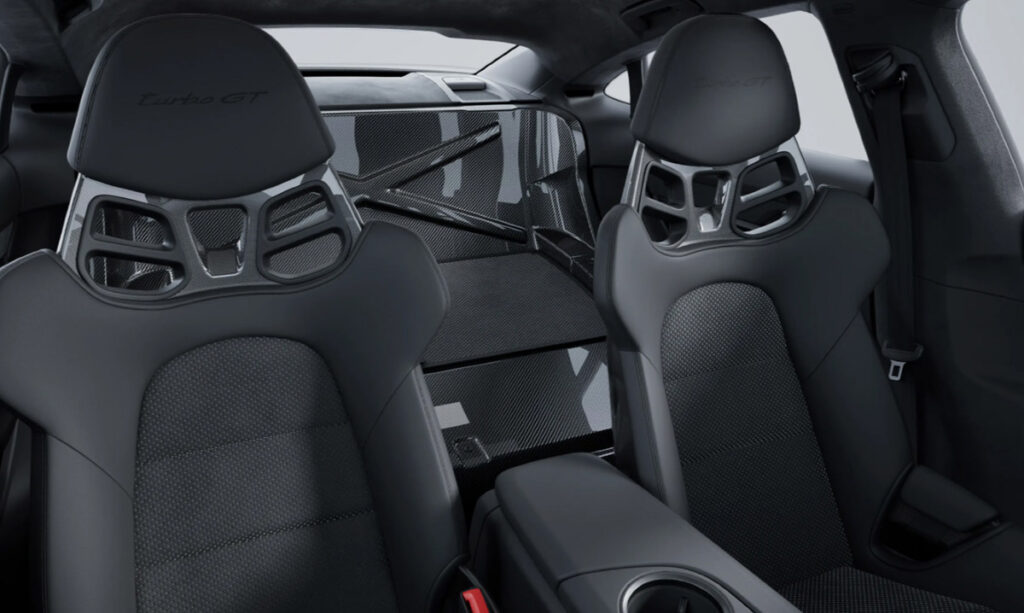
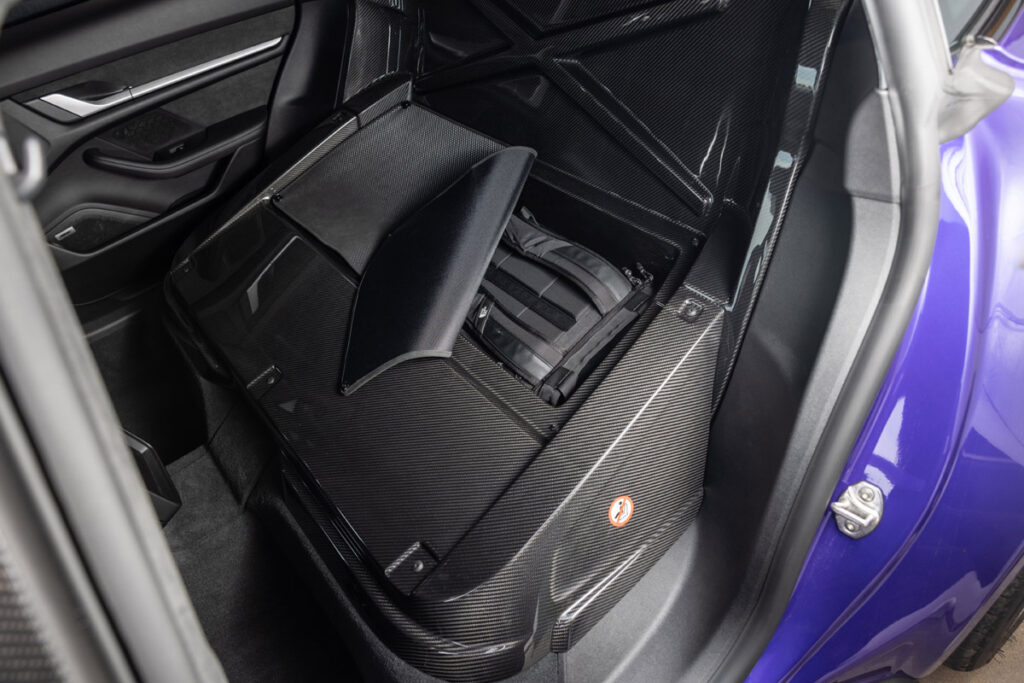
CO2
Even though there is CO2 behind the EV curtains, it is CO2 created at the factories, which can be collected. Emission that come out from the tailpipes, cannot be collected. Every tank of fuel bought contributes to climate change. There is no way of going around the math. Fuel consists of carbon and hydrogen atoms. Most of the weight of the fuel comes from carbon atoms. When fuel is burnt, every carbon atom binds to two oxygen atoms (hence CO2). Roughly speaking, when fuel is burnt, it creates CO2 in twice the weight of the fuel. Now, this is gas, so the volume of the generated CO2 is enormous (try our CO2 calculator). Consider how much people drive during their lifetime and how many drivers there are in the world.
Transition to electric vehicles is a change. The man is afraid of changes and it is quite natural. The times were the same when Ford Model T changed the world in the beginning of the 20th century. People saw that the new technology is affordable, but they liked their horses. They believed in the horse, and they were used to its smell, too. Eventually, 15 million people bought the Model T and didn’t look back at horse carriages. The picture of the horse will remain on the Porsche badge forever as a reminder how far we have come. All future cars will be electric because of their power, efficiency and simplicity.
Porsche Taycan technical specifications
(FL = Facelift, ST = Sport Turismo, CT = Cross Turismo)
| Taycan | kWh | peak charge kW | max kW | 60 mph sec. | 100 kmh sec. |
| RWD | 71 | 225 | 300 | 5.1 | 5.4 |
| RWD | 83 | 270 | 350 | 5.1 | 5.4 |
| RWD FL | 82 | 270 | 300 | 4.5 | 4.8 |
| RWD FL | 97 | 320 | 320 | 4.5 | 4.8 |
| RWD ST | 71 | 225 | 300 | 5.1 | 5.4 |
| RWD ST | 83 | 270 | 350 | 5.1 | 5.4 |
| RWD ST FL | 82 | 270 | 300 | 4.5 | 4.8 |
| RWD ST FL | 97 | 320 | 320 | 4.5 | 4.8 |
| 4 FL | 82 | 270 | 300 | 4.4 | 4.6 |
| 4 FL | 97 | 320 | 320 | 4.4 | 4.6 |
| 4 CT | 83 | 270 | 350 | 4.8 | 5.1 |
| 4 CT FL | 97 | 320 | 320 | 4.5 | 4.7 |
| 4S | 71 | 225 | 390 | 3.8 | 4.0 |
| 4S | 83 | 270 | 420 | 3.8 | 4.0 |
| 4S FL | 82 | 270 | 400 | 3.5 | 3.7 |
| 4S FL | 97 | 320 | 440 | 3.5 | 3.7 |
| 4S ST | 71 | 225 | 390 | 3.8 | 4.0 |
| 4S ST | 83 | 270 | 420 | 3.8 | 4.0 |
| 4S ST FL | 82 | 270 | 400 | 3.5 | 3.7 |
| 4S ST FL | 97 | 320 | 440 | 3.5 | 3.7 |
| 4S CT | 83 | 270 | 420 | 3.9 | 4.1 |
| 4S CT FL | 97 | 320 | 440 | 3.6 | 3.8 |
| GTS | 83 | 270 | 440 | 3.5 | 3.7 |
| GTS FL | 97 | 320 | 515 | 3.1 | 3.3 |
| GTS ST | 83 | 270 | 440 | 3.5 | 3.7 |
| GTS ST FL | 97 | 320 | 515 | 3.1 | 3.3 |
| Turbo | 83 | 270 | 500 | 3.0 | 3.2 |
| Turbo FL | 97 | 320 | 650 | 2.5 | 2.7 |
| Turbo ST | 83 | 270 | 500 | 3.0 | 3.2 |
| Turbo ST FL | 97 | 320 | 650 | 2.5 | 2.7 |
| Turbo CT | 83 | 270 | 500 | 3.1 | 3.3 |
| Turbo CT FL | 97 | 320 | 650 | 2.6 | 2.8 |
| Turbo S | 83 | 270 | 560 | 2.6 | 2.8 |
| Turbo S FL | 97 | 320 | 700 | 2.3 | 2.4 |
| Turbo S ST | 83 | 270 | 560 | 2.6 | 2.8 |
| Turbo S ST FL | 97 | 320 | 700 | 2.3 | 2.4 |
| Turbo S CT | 83 | 270 | 560 | 2.7 | 2.9 |
| Turbo S CT FL | 97 | 320 | 700 | 2.4 | 2.5 |
| Turbo GT | 97 | 320 | 760 | 2.2 | 2.3 |
| Turbo GT Weissach | 97 | 320 | 760 | 2.1 | 2.2 |
